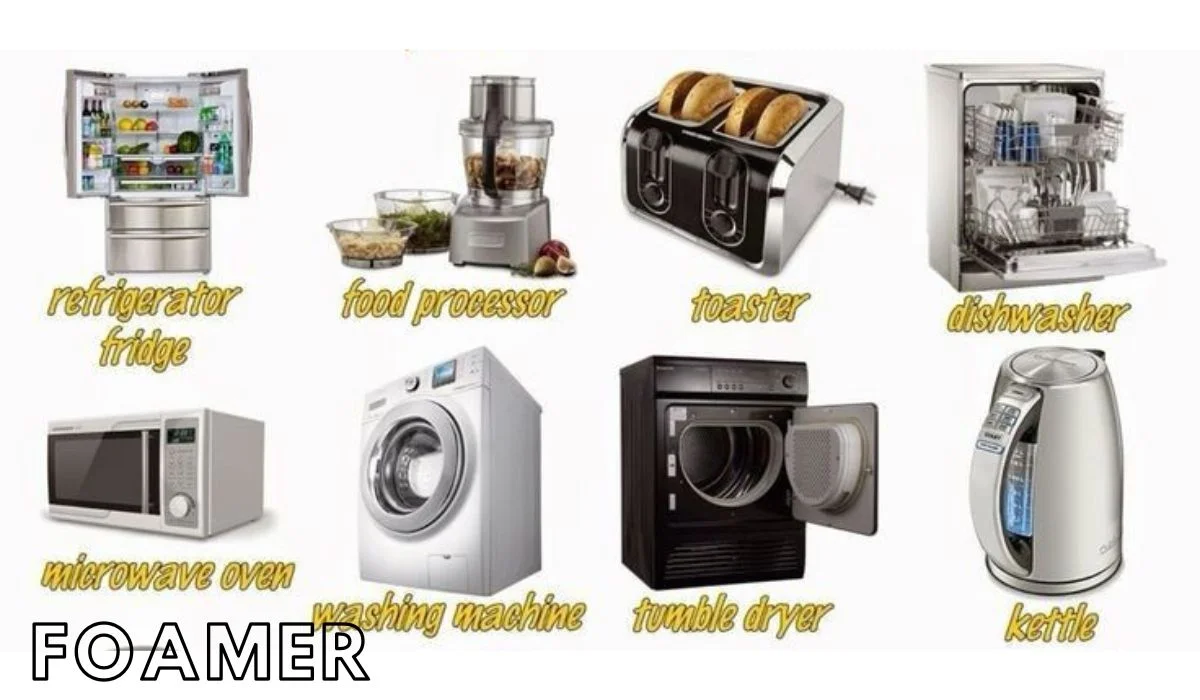When you hear the word “foamer,” you might think of various things—a device in a kitchen, a piece of industrial equipment, or even an obsessed train fan. “Foamer” is a versatile term with several unique meanings depending on the context. This article will dive into the fascinating worlds of railfans, culinary devices, and industrial cleaning to explore what makes a “foamer” such an interesting concept.
Foamer in the Railfan Community
Origin of “Foamer” Among Railfans
The term “foamer” holds a specific place in the railfan, or railroad enthusiast, community. Originally a slang term, “foamer” refers to someone with a strong enthusiasm—sometimes bordering on obsession—for trains and railroads. People often say the term originated from the stereotype of overly eager railfans who would “foam at the mouth” in excitement whenever they saw a train.
Must Visit: Olive Skimmer : A Must-Have Tool for Every Kitchen
What Makes a Railfan a “Foamer”?
To a railfan, spotting and admiring trains isn’t just a hobby; it’s a passion. Foamers are railfans who may go to great lengths, including travel and extensive planning, to watch trains, photograph them, and track their movements. Some common behaviors associated with foamers include keeping extensive records of train sightings, participating in trainspotting clubs, and knowing vast amounts of detail about railway systems.
Common Stereotypes and Misconceptions
Unfortunately, the term “foamer” sometimes comes with negative stereotypes. The community and railroad employees often use it as a playful jab to refer to enthusiastic railfans. However, it’s essential to recognize that foamers are a diverse group with a genuine appreciation for trains. Far from being “overly obsessed,” many foamers are respectful, knowledgeable individuals who advocate for train preservation and contribute valuable historical knowledge to the community.
Foamer as a Culinary Device
Understanding the Culinary Foamer
In culinary arts, a “foamer” is a tool that plays an essential role in creating light, airy foams for various dishes. Culinary foamers, or siphons, are pressurized devices that transform simple liquids like cream or juice into flavorful foams, which can be used to enhance dishes or drinks.
Using a Foamer to Create Culinary Delights
Culinary foamers have revolutionized the way chefs present and enhance their dishes. With a culinary foamer, you can create a wide range of textures and flavors. For example, whipped cream and espuma (Spanish-style foam) are popular applications. Foamers can enhance culinary creations by altering the liquid base or incorporating flavor infusions, providing depth and a visually appealing presentation.
Types of Culinary Foamers
There are a few main types of culinary foamers, each suited to specific tasks. Some common varieties include:
- Whipped Cream Dispensers: A classic choice for making whipped cream.
- Espuma Foamers: Designed for lighter, airy foams.
- Cold Foamers: Used to create cold foam, popular in coffee drinks.
Each type serves a different purpose, and choosing the right one can make a noticeable difference in your culinary output.
The Technical Foamer in Industrial Settings
What Is a Foamer in Industrial Applications?
In industrial and commercial settings, foamers refer to devices that generate foam for cleaning or coating purposes. Cleaning agents called foamers combine water and air to create foam that adheres to large surfaces, allowing the agents to effectively clean before being rinsed away.
Benefits of Industrial Foamers
Industrial foamers offer several benefits, such as conserving cleaning agents, enhancing sanitation, and minimizing water usage. Because foamers can apply cleaning solutions evenly across surfaces, they are particularly effective for use in food processing, healthcare, and other environments that require high levels of cleanliness.
Types of Industrial Foamers
Various industries utilize different foamers, each with distinct characteristics specifically designed to meet specific cleaning requirements.
- Portable Foamers: Ideal for flexible, mobile applications.
- Wall-Mounted Foamers: Suitable for large, stationary cleaning systems.
- Automated Foamers: Often used in factories for continuous, hands-free cleaning.
Each type offers a particular advantage based on the environment and the specific demands of the industry.
Foamer and Social Perception
The Enthusiastic Foamer: Social Reactions and Popularity
Whether it’s a railfan’s intense love for trains or a chef’s reliance on a foamer to perfect a dish, foamers in any sense bring about a strong reaction from those around them. Railfans, for instance, often have a strong online presence and have built a supportive community of like-minded enthusiasts. Similarly, culinary foamers have become popular with home chefs who want to add a touch of creativity to their cooking.
Foamer Culture Online and in Media
Social media platforms significantly influence the perception of foamers. In the culinary world, professional chefs and food bloggers alike share recipes and techniques for using foamers to make dishes visually impressive. Railfans, on the other hand, use online forums, YouTube channels, and Instagram to showcase their passion for trains. Popular media has prominently used the term “foamer” to highlight the niche yet expanding community surrounding it.
Conclusion
The term “foamer” is a fascinating example of a word that has taken on varied meanings in modern language. From describing enthusiastic railfans to referring to an essential kitchen tool and industrial cleaning device, “foamer” serves as a bridge between diverse communities. Despite the stereotypes, foamers—whether they’re train enthusiasts, culinary aficionados, or industrial workers—demonstrate passion, skill, and dedication in their respective fields. The cultural significance and practical applications of foamers show how this seemingly simple term has evolved to embody enthusiasm, creativity, and functionality.
FAQs
What is a foamer in cooking?
A culinary foamer, also known as a siphon, is a device utilized for pressurizing liquids to create foams. This technique is popular for enhancing the presentation of dishes and drinks.
Why are train enthusiasts called foamers?
The term originated as a playful jab at overly enthusiastic railfans who seem to “foam at the mouth” with excitement whenever they see a train.
How is a foamer used in cleaning?
Industrial cleaning agents called foamers combine cleaning agents with water and air to create foam, which is then applied to surfaces for efficient cleaning.
What are some popular brands for culinary foamers?
Some popular brands for culinary foamers include iSi, Whip-It, and Mosa. These brands offer a range of foamers for different culinary applications.
Are foamers necessary in all industries?
Foamers are essential in industries with strict cleaning standards, like food processing and healthcare.




